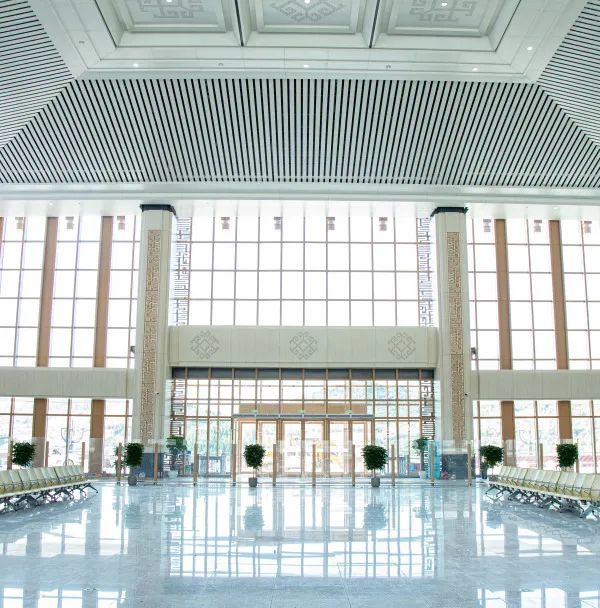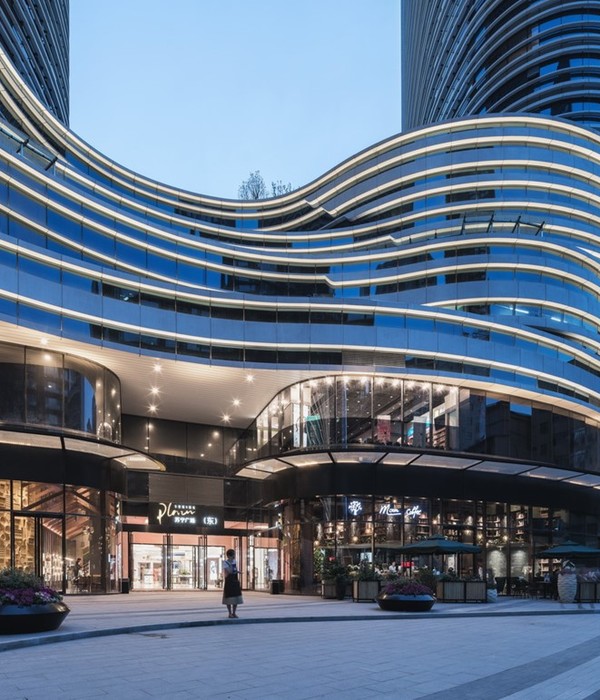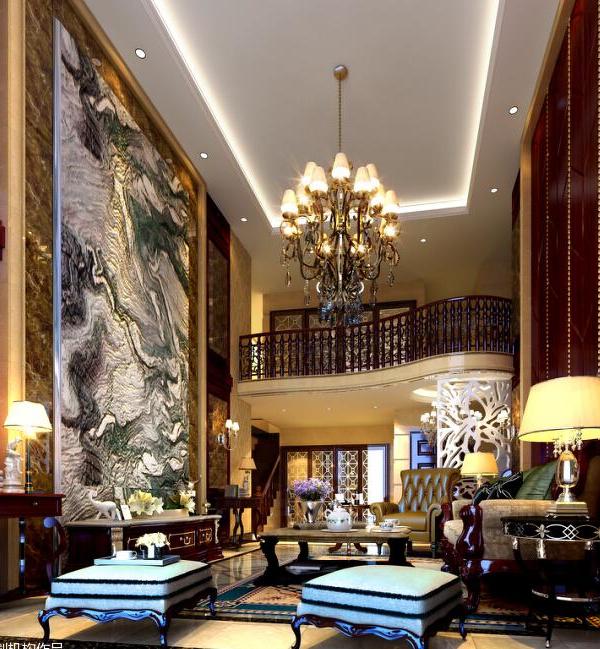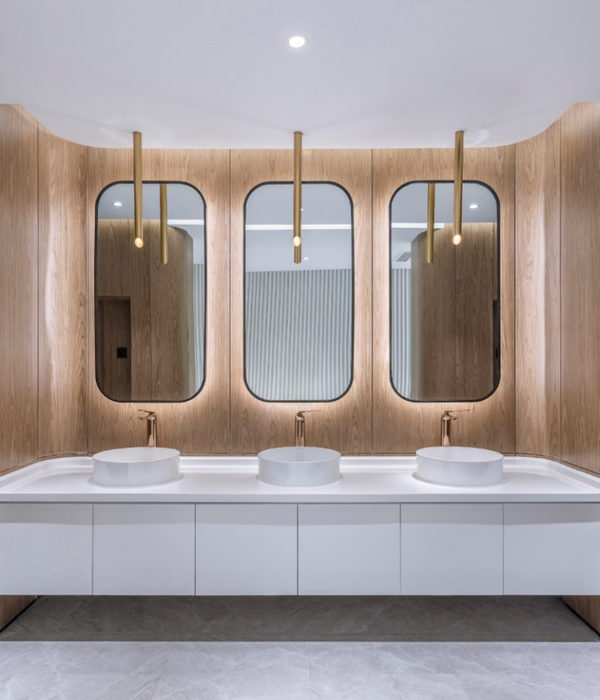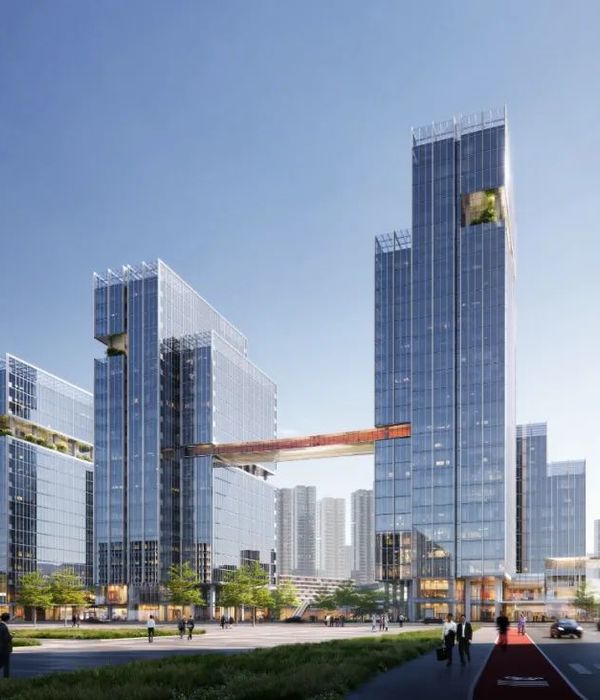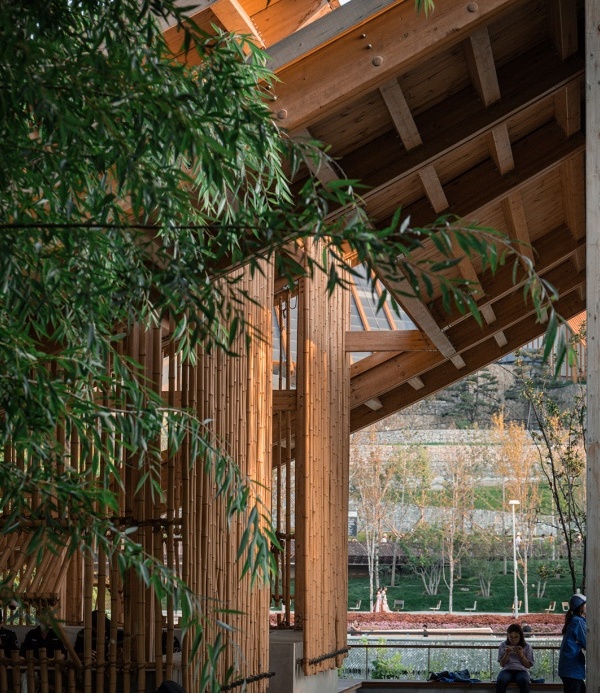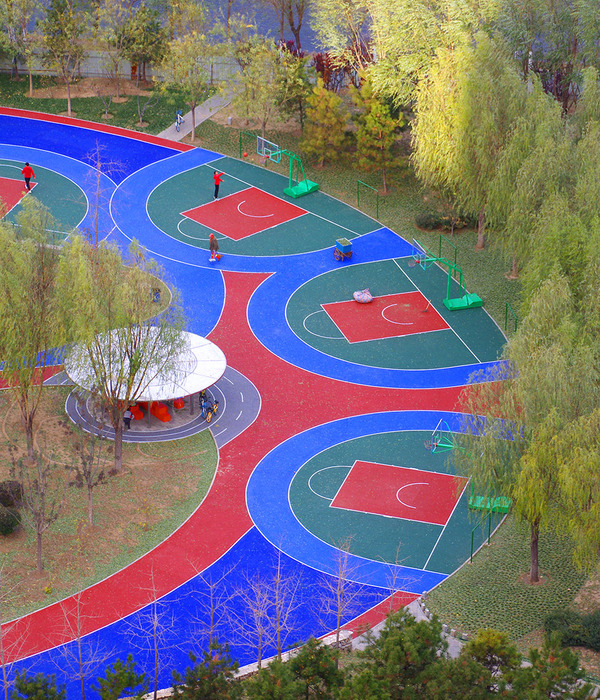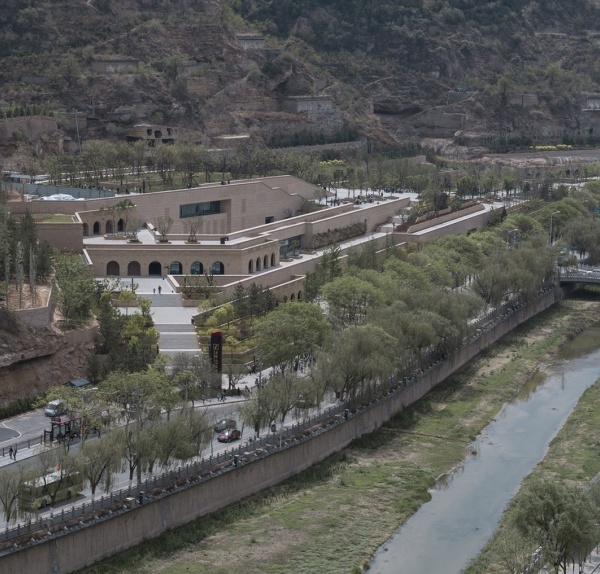- 项目名称:乡土文化的自信重塑——山西宋家沟乡村改造项目
- 设计单位:中国乡建院
- 项目负责人:彭涛
- 主创设计师:彭自新
- 团队:白严严,王俊堡,高璐璐,赵文华,严景业,贾海鹏,陈菲菲,杨建飞
——一位设计师在村里设计时写下的感受
在乡村振兴异地扶贫搬迁的浪潮下,许多移民新村拔地而起,几乎全部是推倒重来亦或是另辟新地,无论如何模仿和研究乡土秩序,设计几乎很难回应自然而然的传统村落的肌理,同时多个自然村的村民的集中安置,是对其村民生产生活的行为秩序的打散与重组,若有所不当,就会造成新的隔阂与矛盾。由此,我们希望能否以植入和空间换置等手法进行移民搬迁的工作,通过公共空间的秩序恢复和散点的分布规划来化解新旧隔阂,恢复乡土文化的自信。
Under the wave of rural revitalization and poverty alleviation, many immigrant villages have risen to the ground; almost all of them are built from the beginning or at least reinvented. However, no matter how they study and mimic the order of local rural area, the immigrant villages are still extremely difficult to respond to the texture of the traditional and natural villages. At the same time, the new and centralized resettlement of villagers who come from different old & traditional villages is a strategy to break up and reorganize the old behavioral order of their villagers’ production and life, which means, if the process of building the resettlement is improper, the new barriers and contradictions between new and old villages will be created. Therefore, we hope that we can carry out the work of immigration relocation by means of implantation and space exchange, and resolve the old and new barriers through the order restoration of public space and the distribution plan of scattered points, restoring the self-confidence of local culture.
▼宋家沟村全景图,the panorama of Songjiagou township
宋家沟乡位于岢岚县东南部,其乡政府所在地宋家沟村是一个背靠山脉,卧于岚漪河畔的中心集镇。村庄紧邻高速路,是本地宋长城沟域旅游的重要入口。村庄从东向西,新旧村依次排开,村内村民边界意识明显,公共活动空间缺乏,在 2017 年时面临着周边自然村村民移民安置的重要任务,同时也难以承担旅游集散和入口节点的重要功能。在一系列问题交织的情况下,整村的系统规划和全面介入改造迫在眉睫。
新旧村边界明显,the village has an obvious boundary between old and new constructions
一河之隔,两侧村民的交流和融合极少,传统旧村空间变成“羞涩”空间,公共活动和场所被分割。面对这种空间语言的纷杂、村民的精神对抗以及新搬迁村民的潜性抵触,我们通过空间的重新梳理,对边界进行了场所植入、柔化与过渡。
Across the river, the exchanges and integration of the villagers on both sides are rare, the traditional and old village space becomes a “embarrassed” space, public activities and places are divided. Facing this kind of spatial language, the villagers’ spiritual confrontation and the potential resistance of newly relocated villagers, we not only have re-combed the space, the boundary between old and new but also has been implanted, softened and transitioned.村庄总平面图,the master plan of Songjiagou Township
沿河岸吸纳周边空余场地形成开放的活动空间,同时植入庙宇、浴室等公共建筑,将原来起单一带状的分割线,变成了有机多元的链接带。
Along the river bank, the surrounding space is absorbed then reformed to the new open space for activities, at the same time, public buildings such as temples and baths are implanted, with the original strip-shaped and dividing boundary becoming an organic and multi-link belt.
▼河道变成隔阂两侧的带状边界,the river channel becomes a strip-shaped boundary on both sides as barrier
▼公共建筑和绿地,public buildings and green area
我们希望搬迁而来的村民可以无论从空间还是生产生活都融入本村。为了使在更多的公共区域有村民的融合,最终我们建议政府对安置房进行碎片化分布,新建和改造收储等多种方式结合,通过规划布局,和深入村庄的居住调研,将安置房“溶解”在了旧村之中。
We hope that the relocated villagers can integrate into the local no matter spatially or in their own lives. In order to achieve the integration of villagers in more public areas, we finally suggested that the government should distribute the resettlement houses in fragments, and combine all strategies like building new houses, renovating houses, store houses and others, truly “dissolving” the resettlement houses into the old villages by in-depth residential research and re-planning the layout.▼多种户型有机植入于旧村,a variety of units are organically implanted in the old village
村庄毗邻高速和省道,在山脚下平平无奇,一个尺度适当的村庄标识能够营造起充分场地进入感,同时对宋家沟村历史文脉及本地宋长城文化进行糅合提炼。利用向村民旧砖瓦材料的收集过程,使村标的设计自然而然的从村庄内部渗出,与整个地域互相回应。
▼村标现状,the iconic building
The Songjiagou Township is adjacent to the expressway and the provincial road. It is bland at the foot of the mountain, but a properly scaled iconic building can create a sense of space when people come in from the entry. Besides, it is a combination and an extract of the local history and the local Song Great Wall culture. The collection process of brick and tile materials allows the design of the iconic building naturally ooze from the interior of the village and respond to the entire territory.
▼村标实景位置图(建设前),the location of the iconic building (Before Construction)
▼村标场地平面图,the layout of the iconic building
▼村标夜间概览,ionic building exterior view by night
▼村标及其广场,the iconic building and square
▼村标结构及分析图,the structure and analysis of the iconic building
▼村标立面图,elevation of the iconic building
利用本地材料的融合感和亲近感形成公共场所的空间,同时也产生了人与互动的关系。简单统一的处理,更为直接也更加凸显了村标的作用。
Using local materials to form the public space, not only give people a sense of engagement and intimacy, but also build a new relationship between people and activities. This is a simple and unified strategy, through this strategy, the function of the iconic building is expressed out more directly and more prominently.
▼村标成为了儿童的乐园,the iconic building became a playground for children
从 1960 年人民公社运动开始至今已近 50 年,这个院落见证了村庄的历史记忆和现在老人们的青春,村庄的公社废弃后为村民居住使用,设计介入后,村民主动将其还给了村委,作为见证着村庄历史变迁和及村内老一代人的记忆,我们将其改成了村史馆和村委会。
人民公社改造前,People’s Commune before renovation
▼人民公社的历史沿革,the history of People’s Commune
遵照村民的意愿,维持它原本的风貌,我们保留了其木结构,保证其原来的尺度,通过现代建造技术对其进行了加固,在拆除屋顶墙体的过程中,我们邀请了村民前来围观和参与。
In accordance with the wishes of the villagers, maintaining its original appearance, we retained its wooden structure, guaranteed its original dimensions, and reinforced it through modern construction techniques. In the process of demolishing the roof and wall, we invited the villagers to come to supervise and participate.
the villagers participated in the demolition of the house and the wooden structure was left behind
公社平面图,plan
正房改建分解,exploded diagram of the main room
▼修复后的公社街景,the street view of People’s Commune after renovation
修复后的公社鸟瞰,bird eye view of People’s Commune
▼改造后的公社庭院,the courtyard after remodeled
▼正房内景,main room interior view
场所由封闭转为开放,互相关联的空间使公共场地变得流动,the space is changed from closed to open, so that the interconnected areas make the public space much mobile than ever
供销社改造完成后,被本村人承包为了客栈,同时他也承诺为村庄老人提供食堂服务,其原本偌大的院子变成了公共戏台,为村庄不断注入活力。
After the transformation of the supply and marketing cooperatives, it was contracted by the villagers as an inn. At the same time, the new owner also promised to provide canteen services for the elderly in the village. The original courtyard was turned into a public stage, and the village was continuously energized.
▼被荒弃的供销社,the abandoned supply and marketing cooperative
▼院内的戏台,the theater stage in the courtyard
▼戏台平时坐满老人,平静地度过午后,people enjoying their afternoon at the theater stage
▼广场上游戏的孩子,children playing in the square
▼热闹的戏台与村民,villagers sitting around the stage
长达一年多的在地陪伴,建设的过程发生了许多有趣的故事,村民比我们想象中的更加关心自己的村庄。更多的时候,变成理性和非理性的对抗,拒绝和接受的对抗,设计师的身份开始转换和变化,建筑或者场地的落地也发生微妙的变化。如今看来,这种变化让我们的方案变得柔和,设计似乎和村庄展开了一场辩论,这让我们更加理解了乡村,在乡村建设中,接受和参与变成了核心,乡土的感觉也不再依附于形式和风貌,如何完成,比设计呈现更为关键。
After more than a year of companionship in the field, there had been many interesting stories in the process of construction. The villagers care more about their village than we think. More often, the main problem becomes a confrontation between rationality and irrationality, or a confrontation between rejection and acceptance, the identity of the designer begins to change and change, and the building itself or the landing of it also undergoes subtle changes. Now, it seems that this kind of change had softened our plan. The design seemed to have a debate with the village, which made us understand the country more. Therefore, in the rural construction, acceptance and participation is the core, and the local feeling is also no longer only attached to form and style, how to complete it is more critical than design itself.
▼村民主动参与拆房(左),并拿出了自己设计的“施工图”(右),the villagers took the initiative to participate in demolitions (left) and provide a“construction map”designed by their own (right)
▼旧村主街改造之前,the main street of the old village before renovation
▼旧村主街改造之后,the main street of the old village after renovation
▼主街改造之前,the main street before renovation
▼主街改造之后,the main street after renovation
▼村庄内部街景,internal street view of the village
▼傍晚的宋家沟,Songjiagou in the evening
当设计面临整村区域地介入村庄的时候,传统的手法或者新式等语言的选择已经不再重要,曾经的村落可谓是一个用温情,传统,邻里,秩序,边界所搭建的巨大“建筑”,我们对这庞大复杂的建筑尝试进行了一次修复。村民的第一参与,空间的故事和记忆性的回应在村庄建设中更为关键。如今的宋家沟已经变成了人流络绎不绝的景区,商业与生活交融,新旧村民,儿童,青年,老人在桥头,广场,河畔,展开了新的生活。
▼西村标,westiconic building
When the design needs the whole village as an Intervention, the choice of traditional methods or new languages is no longer important. The former village can be described as a huge “building” built with warmth, tradition, neighborhood, order and border, and we tried to repair this huge and complex building. During this time, the first participation of the villagers, the story of space and the memory response are even more critical in village construction. Today’s Songjiagou has become a scenic spot where people are lingering, business and life blend together, new and old villagers, children, youth, and old people have started a new life in the bridgehead, square, and riverside.▼西村标入口,entrance to the westiconic building
▼客运中心,the passenger center
项目负责人:彭涛 主创设计师:彭自新 团队:白严严、王俊堡、高璐璐、赵文华、严景业、贾海鹏、陈菲菲、杨建飞 设计单位:中国乡建院 建造时间:2017.04-2017.07 项目位置:山西省忻州市岢岚县宋家沟村
Project leader: Peng Tao
Chief designer: Peng Zixin
Team: Bai Yanyan, Wang Junbao, Gao Lulu, Zhao Wenhua, Yan Jingye, Jia Haipeng, Chen Feifei, Yang Jianfei
Design unit: China Township Institute
Construction time: 2017.04-2017.07
Project Location: Songjiagou Village, Kelan County, Xinzhou City, Shanxi Province
{{item.text_origin}}

